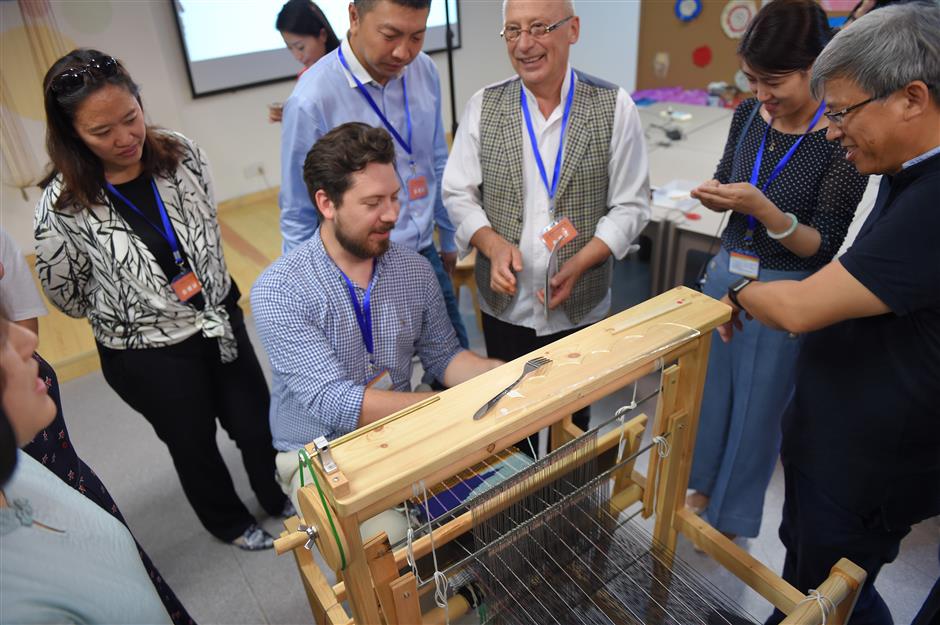Hangzhou focused on developing MICE industry
MICE (meetings, incentives, conventions and exhibitions) industry is the high-end part of the tourism industry. With picturesque scenery, an abundance of hotels, and close to Shanghai, the country’s economic hub of Hangzhou has been developing the industry for almost a decade.
In recent years, Hangzhou has successfully hosted a number of international conventions, including last year’s G20 Summit. The achievements have helped spread its image around the world.
International event planners and enterprises found a reason to invest here. The soft power of MICE industry was consolidated during these activities. The government, encouraged by the result, has accelerated plans to develop the industry further.
Last week, it invited a group of industry leaders from France, Germany and Belgium to experience the city’s upgraded hotels, exhibition halls, scenic spots, infrastructure and craftsmanship by local folks to promote its image among industry elites.
Organizers had designed a two-day trip for them, including an array of tourist attractions, enriched cultural heritage and booming e-commerce and hi-tech enterprises.
The first day began with a visit to China National Silk Museum. If people had to pick a specialty that epitomizes the city’s long history and vibrant craftsmanship, they would go for silk without any hesitation.

A foreigner tries to weave silk using the simple machine at China National Silk Museum.
Hangzhou is one of China’s major production centers of silk. Throughout dynasties, silk has found favor with customers thanks to its light, breathable, smooth texture.
They were exported to other countries on Silk Road. In modern times, dresses made of Hangzhou silk are gifted to the partners of visiting foreign dignitaries.
Modern machines have replaced primitive weaving tools in silk production. However, the China National Silk Museum still has the original spinners. The industry leaders were shown how to weave silk using the simple machine. Exhibits highlighted the glory days of silk production in the city.
In the afternoon, organizers arranged a cruise on the picturesque West Lake. Craftsmen from time-honored brand Wang Xingji were invited to show their fan-painting skills to the visitors.

A visitor learns the fan-painting skills.
Fans are emblematic of Hangzhou along with Longjing tea, silk and parasols. Almost all the famous brands no longer exist except for Wang, which is named after its original owner. It is considered one of the finest brands of Chinese fans.
It was impossible to make an intact fan within several hours. Therefore, the invited guests only got to paint ink wash picture on the surface. Some of them were inspired by the serene surroundings and drew them on the fan.
Since its establishment in 1875, Wang adhered to the high quality standards. The angle of sections must measure between 115 degrees to 120 degrees. Fan ribs must be made of the outermost layers of moso bamboo, which is stronger than other varieties.
Unlike other local handcrafts that have been mostly replaced by machines, mechanization has not yet reached the fan industry in Hangzhou where all Wang’s fans are still handmade.
Late evening, they were taken for a musical performance on West Lake. Produced by famous film and stage director Zhang Yimou, “Most Memorable is Hangzhou” was performed for the first time at the G20 Summit last year and caused a sensation across the country.
In the musical, colorful lights swirl across the water as dancers, dressed in traditional costumes, step onto a stage that is immersed 3 centimeters below the lake surface. Traditional Chinese opera and music is integrated with Western music and performance, presenting the audience with a 45-minute visual extravaganza.

Visitors pick tea leaves at Longjing Village.
The second day started with a sip of Longjing tea. The aromatic green tea is an indispensable part of the city’s millennia-old culture. Longjing Village is home to authentic Longjing tea. Its moist air, abundant rainfall and favorable temperatures make the leaves tender.
The tea gardens are their most picturesque and idyllic as the terraced shrubs thrive. The guests followed local farmers, climbing along the stone-paved path and picking tea leaves themselves.
Later, they tried to make Hangzhou’s famous xiaolongbao. The pan-fried bun is made from semi-leavened dough, filled with minced pork and vegetables. Chopped green onions and sesame are sprinkled on the buns while they are being cooked. The snack is known for its crunchy fried bottom and piping hot soup.
After filling tummy, guests visited Hangzhou-based e-commerce giant Alibaba and digital hi-tech company Hikvision. They experienced the latest technology and products in the two enterprises.
The Hangzhou government has focused on developing smart technology industry. It has created No. 1 Project, which has two prongs — developing information technology and promoting smart applications.
During the two-day trip, these industry leaders sometimes rode public bicycles instead of taking cars. Hangzhou is operating the largest government-owned bicycle rental system in the world, with 85,800 bikes and daily usage peaking at 473,000. Today, they are the new icon of the city.
















